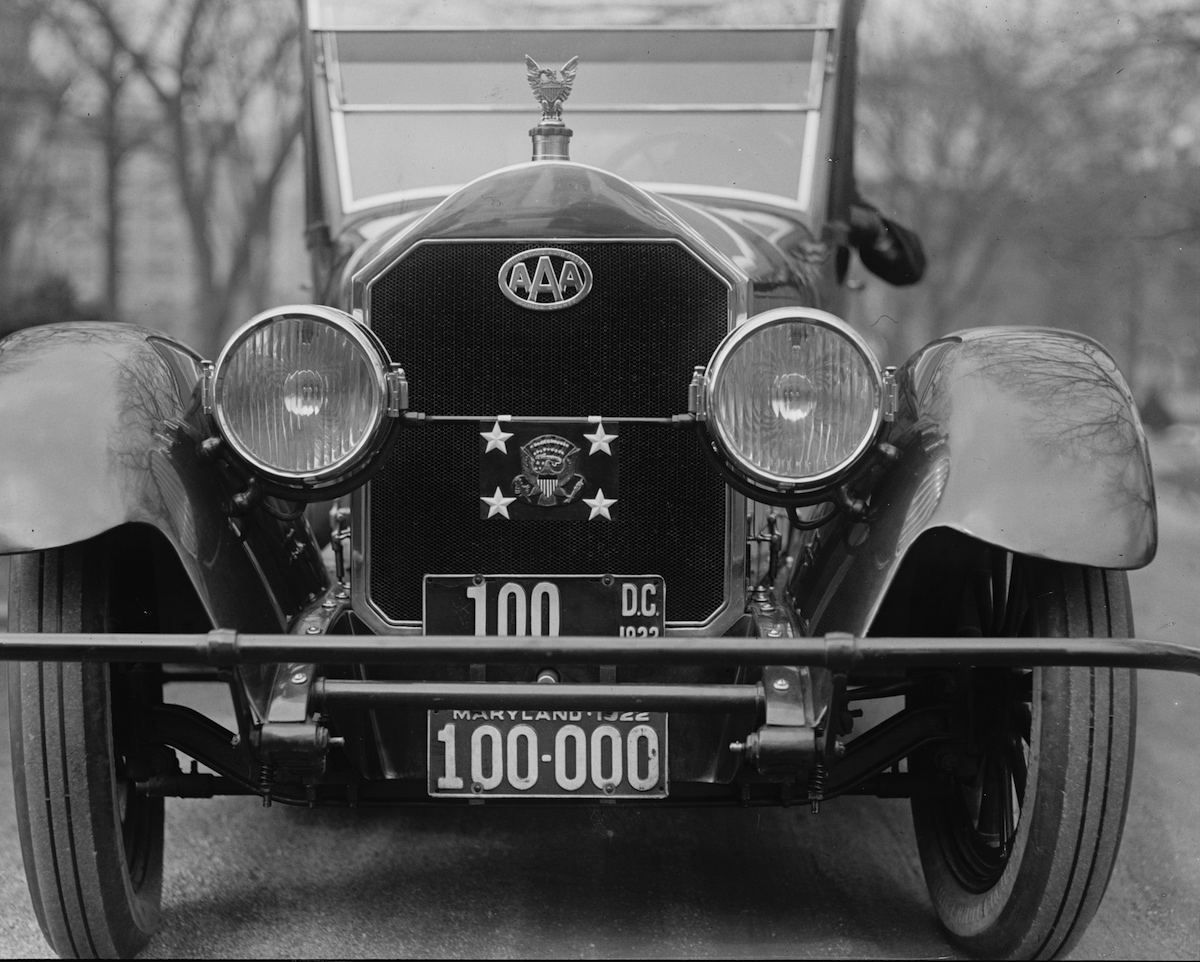
When New York became the first U.S. state to require license plates, 115 years ago Monday, the plates weren’t the long alphanumeric combinations drivers would recognize from today.
On Apr. 25, 1901, New York Governor Benjamin Odell Jr. signed into law a bill requiring owners of motor vehicles to register with the state. It also mandated that the every automobile or motor cycle bear “the separate initials of the owner’s name placed upon the back thereof in a conspicuous place, the letters forming such initials to be at least three inches in height.” Owners were expected to provide their own identifying letters, and in those early days there were no restrictions on materials, style or color. Some used metal house letters on leather or wood, others painted the letters directly on their vehicles, according to license plate collector and historian Keith Marvin.
Though the new law put an extra burden on drivers, they were left “rejoicing” at news the bill was signed, wrote the New York Tribune. The reason was that, before the law passed, local regulations often differed—which meant that not only were the laws hard to follow, but also that drivers often found themselves losing out to people who got around the old-fashioned way. As the New York Times reported, “automobilists found that in many instances they were not accorded equal rights with the drivers of horses, and the confusion resulting from these various laws led to the need of a uniform standard.”
Get your history fix in one place: sign up for the weekly TIME History newsletter
It wasn’t a wild idea in 1901 that automobiles were suffering from the lack of official acknowledgement: the New York Tribune later echoed that “one of the objects of the law was to put a stop to the harassing of the owners of automobiles with local regulations,” and the journal Turf, Field and Farm called cars an “unnatural vehicle” in their reporting on the bill. After the licensing and registration law passed, however, local authorities—even if they controlled a highway or street—could not ban cars from using it. The law also imposed a minimum speed limit (8 mph in cities and 15 mph in rural areas) below which local speed limits could not go.
On May 2, the Times reported that 17 people had already applied for licenses and a man named George F. Chamberlain would receive the first one. By September the Tribune reported 715 had applied, and licenses totaled 1,566 by the beginning of April the following year, according to Marvin.
But, as the number of cars and drivers increased, the painted-on-initials system began to fail, for a simple reason: There were just too many people with the same initials. Hence, the modern license-plate.
On May 15, 1903, the state legislature passed a new law requiring the New York Secretary of State to assign each registered owner a number that would be displayed on the back of the vehicle. And that same year—though New York drivers would have to provide their own plates until 1910—Massachusetts became the first to distribute state-issued plates.
More Must-Reads from TIME
- Cybersecurity Experts Are Sounding the Alarm on DOGE
- Meet the 2025 Women of the Year
- The Harsh Truth About Disability Inclusion
- Why Do More Young Adults Have Cancer?
- Colman Domingo Leads With Radical Love
- How to Get Better at Doing Things Alone
- Michelle Zauner Stares Down the Darkness
Contact us at letters@time.com